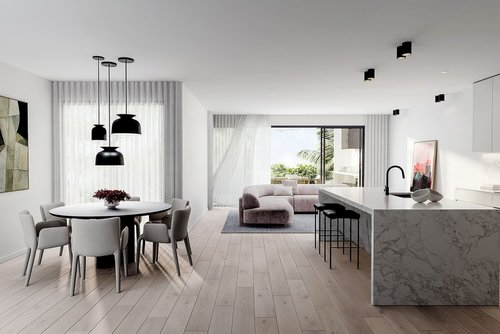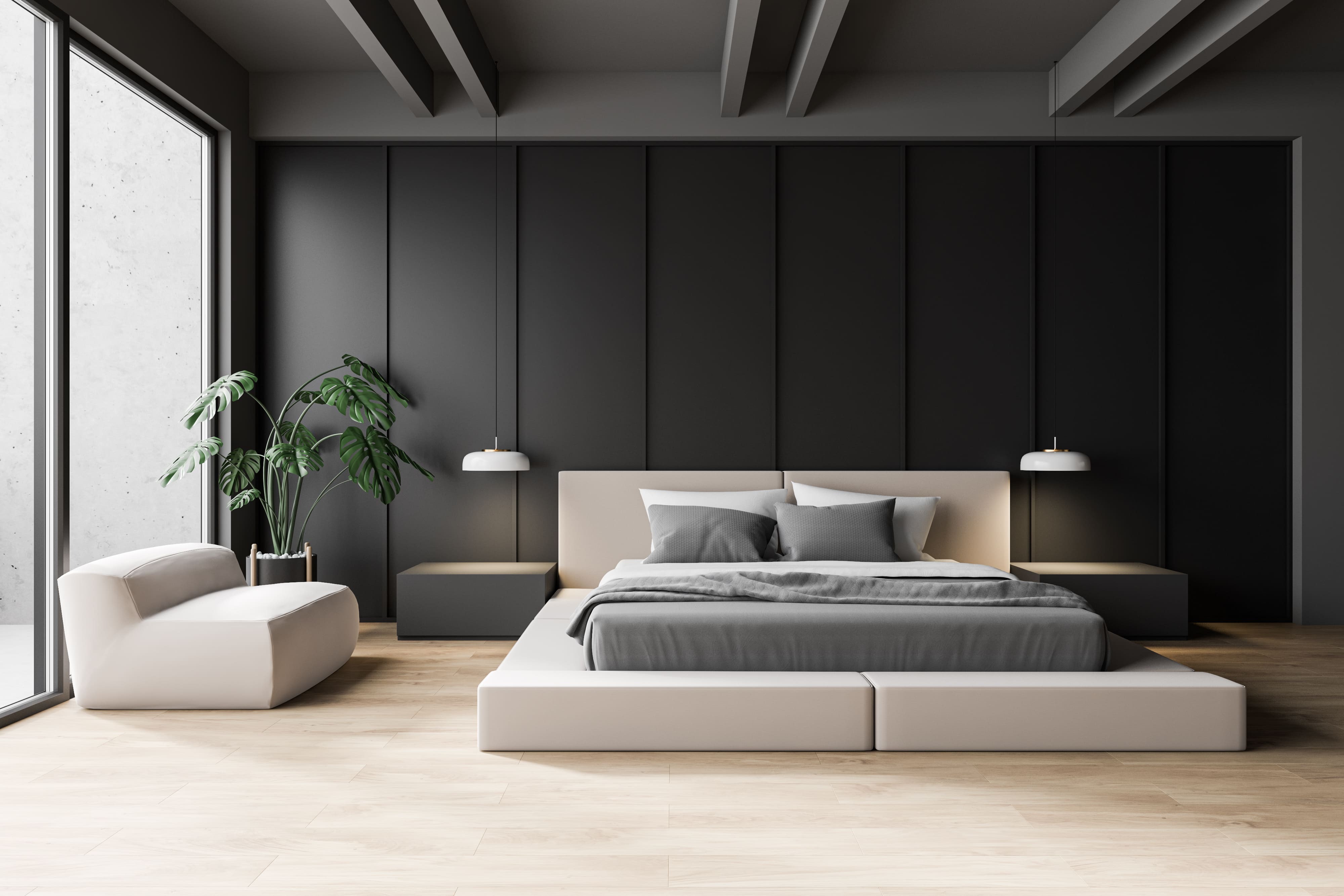Discover the Art of Dealing With an Interior Designer Miami
Why Recognizing the Principles of Inside Design Is Important for Effective Space Planning
Understanding the principles of indoor design is basic to efficient area planning, as it lays the groundwork for creating environments that balance capability with aesthetic charm. Important components such as equilibrium, proportion, and flow are not just decorative considerations; they are important in optimizing how a room is utilized.
Significance of Area Preparation
Space planning is a fundamental aspect of interior decoration that significantly affects the capability and appearances of a room. It involves the calculated plan of furnishings, components, and architectural elements to optimize using offered room while improving the general user experience. Effective space preparation addresses different variables, including flow, availability, and the details requirements of the owners.
Among the key advantages of area planning is its ability to boost spatial efficiency. Interior design Miami. By attentively organizing a format, developers can guarantee that every area offers a function, reducing clutter and advertising a feeling of order. Furthermore, appropriate room preparation fosters a harmonious setting, enabling seamless motion and communication within a room
Additionally, effective room preparation takes into account natural light, sightlines, and the partnership in between various locations. This holistic strategy not just elevates the visual appeal but also adds to the health and productivity of the occupants. Inevitably, a well-executed area plan contributes in producing a well balanced and inviting environment, making it necessary for any type of interior decoration task.
Key Concepts of Inside Layout

One basic principle is balance, which can be symmetrical, unbalanced, or radial. In proportion equilibrium produces a feeling of order, while asymmetrical balance provides a more dynamic visual charm. One more critical concept is percentage and scale, making sure that the dimension of furniture and decoration components relate harmoniously per various other and the general space.
Shade concept also plays a substantial role, affecting state of mind and understanding. Designers make use of shade combinations to evoke details feelings and boost the spatial experience. Furthermore, the concept of rhythm entails creating a sense of movement through rep of shades, forms, or patterns, leading the eye throughout the space.
Finally, the principle of focus routes attention to focal factors, enabling a clear narrative within the layout. Interior design Miami. By adhering to these vital concepts, indoor designers can produce atmospheres that not just satisfy functional demands however also reverberate with the passengers on a psychological degree
Influence On Functionality and Circulation

The arrangement of furniture, the option of products, and the integration of innovation all play crucial functions in achieving ideal performance. Placing seating locations in closeness to workspaces can assist in communication and partnership, therefore enhancing efficiency. Additionally, making sure that pathways are unobstructed and clear enables for effective motion, lowering congestion and promoting a natural circulation throughout the space.
Additionally, including aspects such as lighting and useful content shade can even more assist in marking locations, making it easier for individuals to browse their environment. Thoughtful area planning thinks about not just the physical facets of design yet additionally exactly how individuals connect with their surroundings. Inevitably, a focus on capability and circulation not only enhances the user experience yet also raises the total performance of the space, producing an environment that meets the demands of its residents while promoting a feeling of consistency and equilibrium.
Enhancing Aesthetic Appeals and Mood
3 crucial elements-- shade, structure, and lights-- play pivotal functions in enhancing the appearances and state of mind of an indoor area. Shade establishes the emotional tone; warm shades like oranges and reds evoke power and warmth, while cooler shades such as blues and eco-friendlies advertise peace and harmony. Selecting a harmonious color combination can change a room, producing a natural and aesthetically appealing setting.
Texture includes depth and passion, adding to the responsive experience within an area. A mix of structures-- smooth surfaces, deluxe textiles, and natural materials-- can produce visual intrigue and enhance convenience. Combining a soft velvet couch with a streamlined glass coffee table can create a well balanced aesthetic that welcomes communication.
Lighting, usually an overlooked element, substantially influences mood. Natural light fosters an open, ventilated environment, while purposefully positioned artificial lighting can develop warmth and emphasize building features. Dimmer buttons enable flexibility, permitting adjustments to match numerous tasks or times of day.
Incorporating these 3 components thoughtfully not only elevates the aesthetic charm of a room yet likewise cultivates an ambience that reverberates with its intended objective, ultimately improving the general experience for its occupants.
Practical Applications in The Real World
Applying interior layout principles in genuine life calls for a thoughtful approach that integrates color, structure, and lighting into day-to-day spaces. By comprehending exactly how these aspects collaborate, individuals can develop environments that are not just visually appealing yet additionally useful and unified.
As an example, in a small living location, employing a light shade scheme can make the space really feel larger and much more open. Strategic use mirrors can improve natural light and create an impression of depth. Incorporating various structures with fabrics, such as rugs and pillows, can informative post add heat and passion without frustrating the senses.
Lighting plays a crucial duty in defining the ambience. Split illumination, consisting of ambient, task, and accent alternatives, enables flexibility in mood setups. In an office, for instance, a mix of all-natural light, desk lights, and attractive fixtures can boost efficiency while maintaining a welcoming ambiance.
In addition, understanding spatial connections and furnishings plan can bring about improved performance. By sticking to principles such as balance and percentage, one can make sure that rooms offer their desired objective while remaining cosmetically pleasing. In general, practical applications of interior decoration principles substantially boost the livability and appeal of any atmosphere.
Conclusion
Finally, comprehending the principles of interior decoration is important for effective room planning, as it fosters a balance in between functionality and aesthetic appeals. By using key principles such as percentage, shade concept, and circulation, designers can develop atmospheres that improve both functionality and visual appeal. Ultimately, this knowledge adds to the development of rooms that not only satisfy sensible demands however also elevate the total atmosphere, causing even more satisfying and reliable experiences for customers.
Comprehending the concepts of interior style is basic to efficient area planning, as it lays the groundwork for producing atmospheres that harmonize functionality with aesthetic appeal.Area preparation is an essential aspect of interior design that significantly influences the capability and appearances of a room. In addition, appropriate space planning fosters a harmonious setting, enabling for smooth movement and interaction within an area.
Furthermore, the concept of rhythm entails developing a feeling of movement with rep of shapes, patterns, or colors, leading the eye throughout Source the room.
In verdict, understanding the concepts of interior layout is vital for effective area preparation, as it promotes an equilibrium in between functionality and aesthetic appeals.